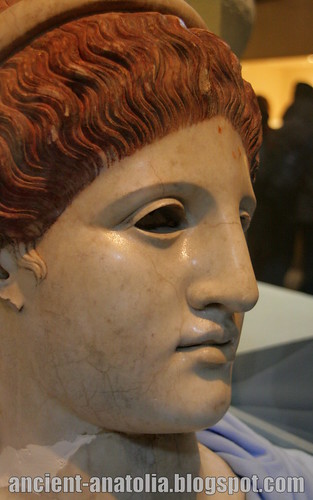
Perfect head statue of Roman female at Bolu Archaeology Museum, Claudiopolis of Bithynia, Bolu, Turkey, opened recently.
Bolu was part of one of the Hittite kingdoms around 2000 BC and later 500 BC became one of the leading cities of the Kingdom of Bithynia. Strabo mentions a Hellenistic town, Bithynium, celebrated for its pastures and cheese, which according to Pausanias was founded by Arcadians from Mantinea.
In the Ancient Roman era, as is shown by its coins, the town was commonly called Claudiopolis after Emperor Claudius. It was the birthplace of Antinous, the posthumously deified favourite of the Roman Emperor Hadrian, who was very generous to the city, and his name was later added to that of Claudius on the coins of the city. Emperor Theodosius II (408-50) made it the capital of a new province, formed out of Bithynia and Paphlagonia, and called by him Honorias in honour of his younger son Honorius.
Bolu, Turkey more...